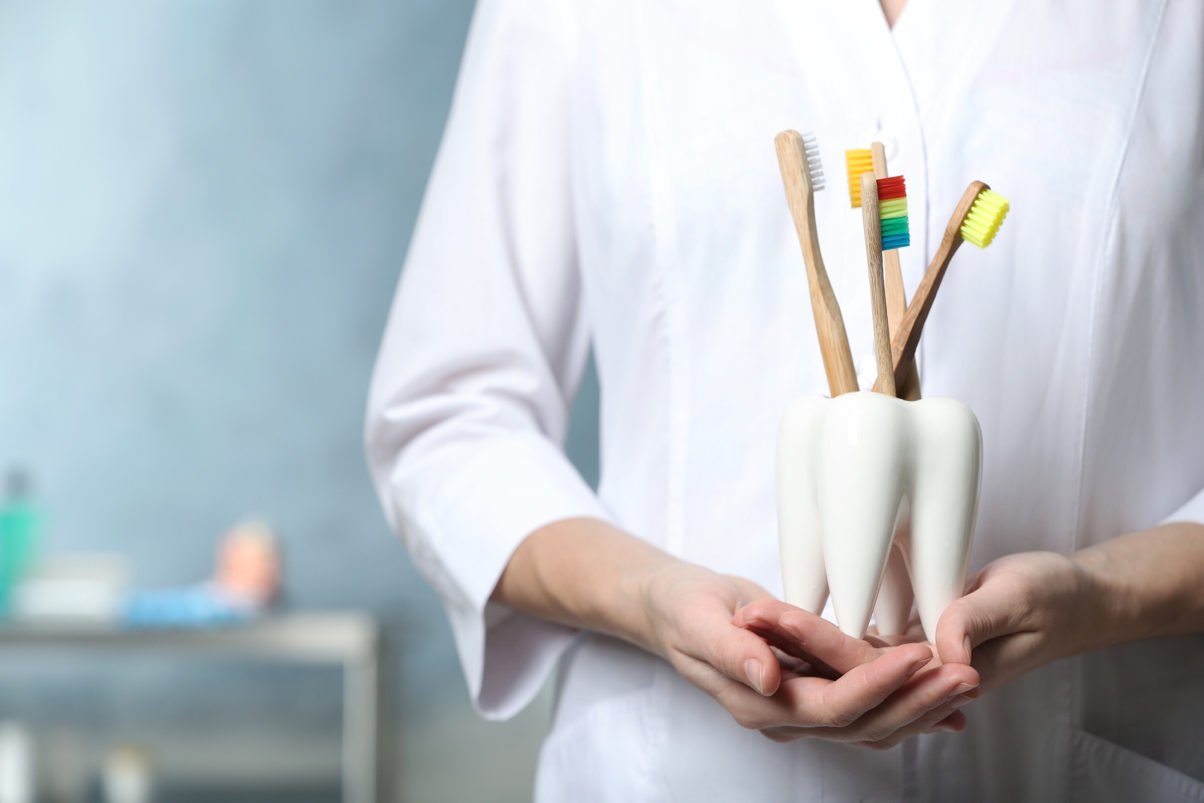Most people don’t think much about proper toothbrush storage. Unfortunately, some common storage mistakes can actually put your oral health at risk. Here’s what you need to know about storing your toothbrush properly, how often you should change your toothbrush, and some tips on choosing a quality product that will help you keep your teeth healthy and clean.
The Right Way to Store Your Toothbrush
The American Dental Association recommends that you thoroughly rinse your toothbrush after brushing and then to store it upright in a holder or cup, so it won’t come into contact with any other toothbrushes. The ADA also recommends that you store your toothbrush out in the open air so it will dry naturally. It’s important to remember that any type of enclosed moist environment will create an ideal setting where microorganisms can grow and multiply in a matter of only a few hours. You can reduce this risk by thoroughly shaking out your toothbrush after brushing to remove excess water.
Common Mistakes to Avoid
With so much dust and airborne particulates flying around, many people believe it’s best to enclose their toothbrushes in cases. Unfortunately, this can actually cause bacteria to proliferate. Many people make other common errors that can cause their toothbrushes to become contaminated. These include:
Laying toothbrushes flat on the counter
When they place their toothbrushes flat on the bathroom counter, the bristles may be exposed to household cleaners and germs. If you failed to adequately shake moisture from your toothbrush after brushing, water can pool and provide a perfect environment where bacteria can multiply.
Storing toothbrushes near the toilet
If you have a relatively small bathroom and a powerful water-efficient toilet, your toothbrush may be regularly exposed to contaminated water. At least one study found that a flushing toilet can expel microorganisms as far as 2.7 feet. In reality, however, the microbiology community’s consensus is that toilet spray can actually spread around six feet after every flush.
Storing toothbrushes near medicine cabinets
Some people stash their toothbrushes in their medicine cabinets because they feel the cheap plastic tools clash with their bathroom décor. This can keep them from drying out, allowing bacteria to proliferate in the dark. If you’ve been hiding your toothbrush, consider switching to a more attractive model or upgrading the holder.
When to Change Your Toothbrush & How Often
In addition to these common mistakes, many people keep their toothbrushes too long. According to the ADA, it’s best to swap out your toothbrush every three to four months. You should also inspect your toothbrush regularly to make sure it doesn’t have any frayed or missing bristles.
When you choose a toothbrush, it’s important to make sure the product has earned the American Dental Association (ADA) Seal of Approval. The ADA seal signifies that the toothbrush has undergone extensive quality control tests for safety and efficacy. You should also select a toothbrush with soft bristles, since medium- and hard-bristled toothbrushes can damage tooth enamel, gums and root surfaces.


 Previous Article
Previous Article

